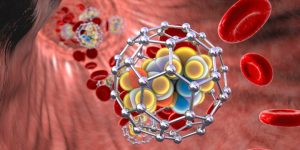Alzheimer’s disease is a growing concern, with millions affected worldwide. A recent study highlights how two-dimensional (2D) nanomaterials could improve the diagnosis and treatment of the disease. Among the researchers is Professor Dr. Goh Khang Wen, Pro Vice-Chancellor (Global Engagement) at INTI International University, whose work focuses on the role of ultra-thin nanomaterials in tackling one of the most pressing neurological disorders today.

Professor Dr. Goh Khang Wen, Pro Vice-Chancellor (Global Engagement) at INTI International University, is part of a research team studying how nanostructures can improve the detection and diagnosis of Alzheimer’s disease.
Existing methods for diagnosing Alzheimer’s rely on brain imaging, cerebrospinal fluid (CSF) analysis, and cognitive tests. While effective, these approaches have significant limitations. MRI and PET scans are expensive and inaccessible to many patients, while CSF tests require a painful spinal tap, making them impractical for large-scale screening. The study explores how 2D nanomaterials offer a non-invasive and highly sensitive alternative, detecting disease biomarkers in readily accessible biological fluids like blood.

Current Alzheimer’s diagnosis methods rely on brain imaging, cerebrospinal fluid (CSF) analysis, and cognitive tests—effective but costly, invasive, and not widely accessible.
“These nanomaterials allow us to develop biosensors that can detect beta-amyloid plaques and tau proteins—the hallmarks of Alzheimer’s disease—through a simple blood test,” said Prof. Goh. “This could lead to earlier diagnosis, giving doctors and patients a crucial advantage in managing the disease.” Graphene oxide (GO), black phosphorus, and MXene-based biosensors have demonstrated exceptional accuracy among the materials tested. These nanostructures are highly conductive and biocompatible and can detect the slightest traces of disease-related proteins.

Ultra-thin materials like graphene oxide and black phosphorus nanosheets can detect Alzheimer’s biomarkers in blood, offering a sensitive and non-invasive diagnostic alternative.
Beyond diagnostics, 2D nanomaterials are showing significant promise in treatment. One of the main factors in Alzheimer’s is the buildup of harmful protein aggregates in the brain, which damages neurons and leads to memory loss and cognitive decline. The study found that graphene oxide and black phosphorus nanosheets can stop these proteins from clumping together or even breaking them apart, potentially slowing disease progression and reducing neurodegeneration.
“Our findings suggest that these nanomaterials can reduce brain inflammation, protect neurons, and clear harmful protein deposits,” explained Prof. Goh. “This could reshape the way Alzheimer’s is treated, making therapies more effective and precise.” Another significant advantage is their ability to cross the blood-brain barrier, a key challenge in neurological treatment. This means they could deliver drugs directly to affected brain areas, improving treatment efficiency.
Using 2D nanomaterials could also lead to more personalised Alzheimer’s treatment. Instead of a one-size-fits-all approach, doctors could tailor treatments based on each patient’s unique biological markers, improving outcomes and quality of life.
With over 82 million people expected to suffer from Alzheimer’s by 2030, innovations like nanomaterial-based diagnostics and therapies could be a game changer. If successful, 2D nanomaterials could provide a non-invasive, highly accurate, and scalable way to detect and manage the disease, offering new hope to millions worldwide.